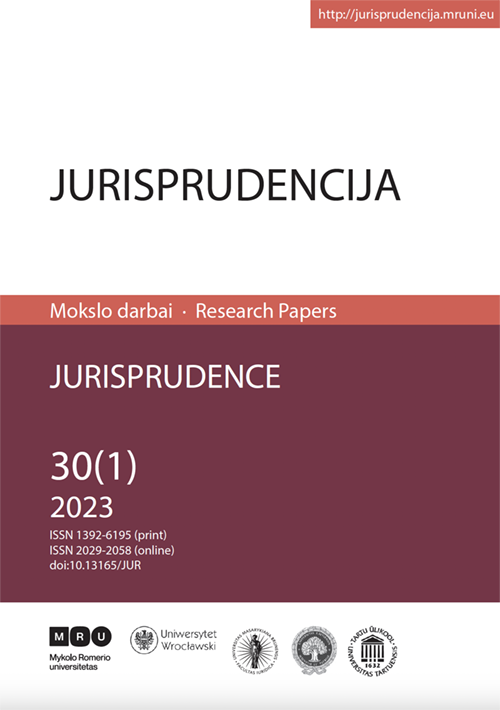TEISMINĖS MEDIACIJOS LIETUVOJE RAIDA IR GALIMOS TOBULINIMO KRYPTYS: TEISĖJŲ POŽIŪRIO TYRIMAS
THE DEVELOPMENT OF JUDICIAL MEDIATION IN LITHUANIA AND POSSIBLE DIRECTIONS FOR ITS IMPROVEMENT: THE STUDY OF JUDGES’ ATTITUDES
Author(s): Natalija Kaminskienė, Agnė Tvaronavičienė, Irena ŽemaitaitytėSubject(s): Law, Constitution, Jurisprudence, Civil Law
Published by: Mykolas Romeris University
Keywords: judicial mediation; civil procedure; court mediator; judge; alternative dispute resolution;
Summary/Abstract: Judicial mediation has been used in Lithuania for more than fifteen years. During this period, the model of the application of this alternative dispute resolution method in Lithuania has experienced constant changes and faced various challenges, from the model of judges to the market model and back. Such transformation shows the fact that this institute is still developing. This article aims to assess the current situation of judicial mediation in Lithuania and, based on judges’ attitudes, to identify possible directions for improving the current model. In order to achieve this goal, the analysis of the legal structure of the judicial mediation model currently used in Lithuania was undertaken, and statistical data on the practice of applying this court-connected alternative dispute resolution method in courts were discerned. This was followed by a survey of judges and a focus group discussion, aiming to find out their attitudes towards the state of the art and further developments of this institute, as judges are the most frequent initiators of this process and the entities most often providing the services of mediation. The article succinctly presents the historical development of judicial mediation in Lithuania, defines the existing model of judicial mediation in civil proceedings and its features, presents the results of an empirical study of the attitudes of judges to judicial mediation, and provides generalizations. The empirical study was carried out by combining quantitative (a survey of judges and judge/mediators) and qualitative (discussions between groups of judges and judge/mediators) research methods. It should be noted that, from the point of view of judges, the institute of judicial mediation in Lithuania, in order to achieve its sustainability and the successful further practice of application, could be improved by paying greater attention to its further publicity, improving the working conditions of judicial court mediators and reviewing the motivational system of court mediator judges. The results of this study create the prerequisites for further research aimed at improving the legal regulation of judicial mediation.
Journal: Jurisprudencija
- Issue Year: 30/2023
- Issue No: 1
- Page Range: 209-237
- Page Count: 29
- Language: Lithuanian

